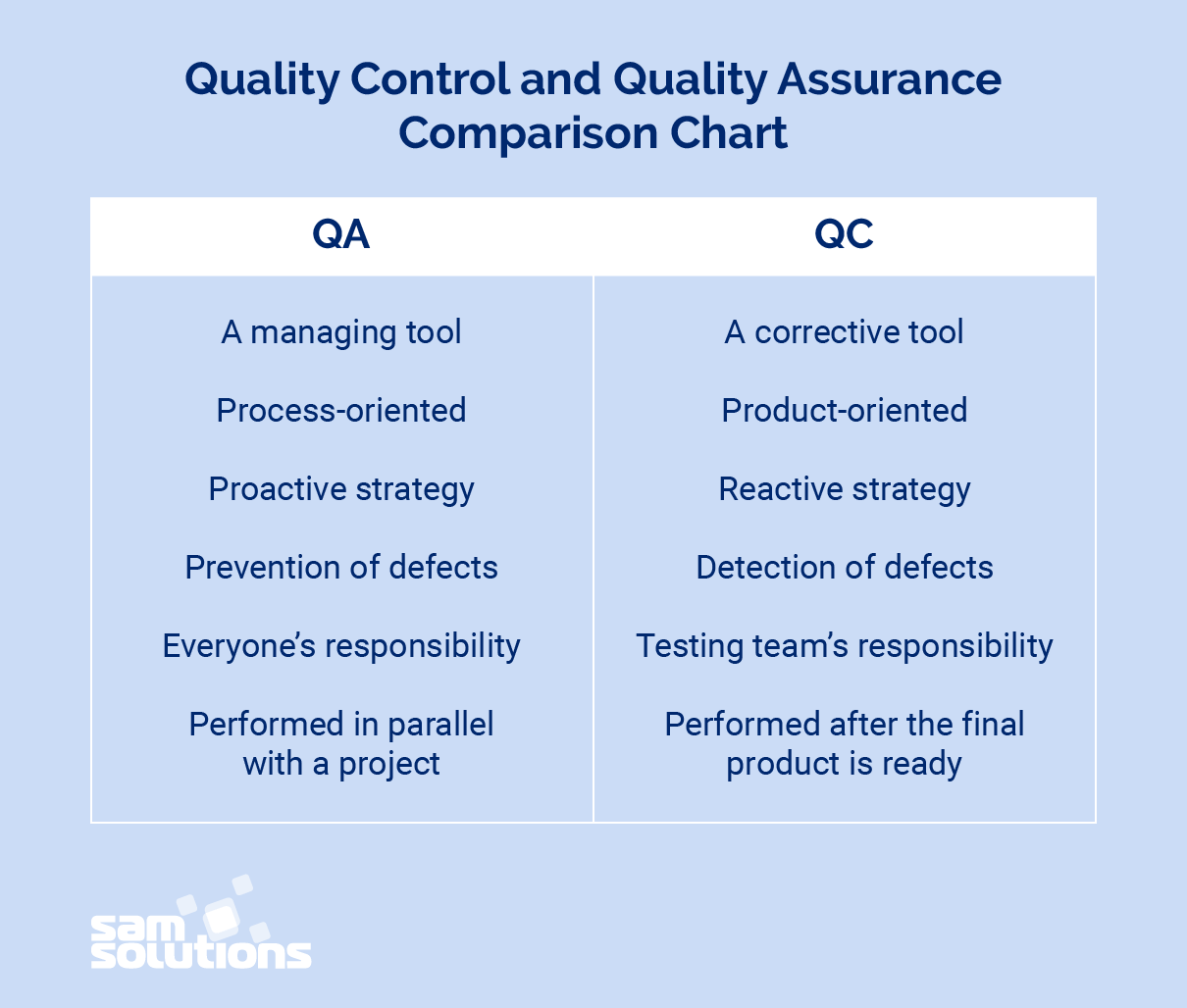Every company, no matter what services or goods it produces, has to deal with the three most important values: time, price and quality. These are three pillars for clients when they choose something to buy. They want either a quick delivery, or a reasonable price, or excellent quality. Obviously, there’s no technology to provide these values in one product simultaneously; clients can expect two of them at best.
For most customers, when asked about the importance of these values, it usually comes down to quality. In this article, we would like to focus on the software quality and the way it is achieved and supported during the development process.
What Are Software Quality Factors?
A software product should correspond with a range of requirements to be considered a high-grade product. The following are some important quality factors:
- Performance — the capacity to perform transactions under a specified workload with the adequate response time
- Extensibility — the ability to add functions to the existing system without damaging it
- Usability — a simple and clear interface
- Security — the ability to protect personal data via authorization and authentication techniques
How to control software quality? As a rule, producers utilize two practices — quality assurance vs. quality control — to improve and maintain the quality of their products and services.
Many people wonder if there’s a difference between quality planning, assurance and control, as the terms sound similar. The essence is that quality assurance (QA) is an integrated process that includes the following activities:
- Analyzing
- Planning
- Implementation
- Control
- Correction
Thus, planning and control are essential parts of the general QA process.
But the most frequently asked question is about the difference between quality assurance and quality control, as these two terms are often confused. It’s important to understand that, though both terms are aspects of one management system, they are still not synonymous. They have significant differences and are not interchangeable.
A clear comprehension of the distinctions between QA and QC helps create an effective management plan, correctly distribute duties among the staff and make sure that the end product corresponds to the defined standards and needs.

Quality Assurance
QA is a series of activities that are determined before production begins. These activities start together with a project and take place during the whole cycle. QA ensures that all of the agreed methods, approaches and techniques are implemented without deviations in order to prevent mistakes and, as a result, satisfy the customer’s needs.
Thus, the main goal of QA is to organize flawless development and to protect the final product from possible defects. It’s sometimes deemed the “zero defect” approach.
Examples of Quality Assurance Activities
- Establishing standards
- Project planning
- Internal and external audits
- Process analysis
- Process documentation
- Selection of tracking tools
- Checklist inspection
- Training courses for team members
QA makes use of the given specifications, standards, guidelines and other related documents. It can be performed by managers, clients or third parties. Nevertheless, self-control is more emphasized and appreciated when every person performs assigned duties according to the norms and takes responsibility for them. The QA process has both advantages and disadvantages.
Advantages of Quality Assurance
The benefits of quality assurance are significant:
- Final costs reduction — most mistakes are prevented at early stages, so there’s no time and effort wasted on reworking faulty components afterward.
- Enhanced motivation — employees understand their importance and get recognition for what they do; it always brings better results.
- No barriers between workers and managers — QA cultivates collaboration rather than supervision.
- Competitive advantages — a stable level of fine products is the best tool to draw loyal customers.
Disadvantages of Quality Assurance
- Time-consuming — it requires a lot of time to train the staff to perform QA.
- High initial costs
QA Approaches
The total quality management (TQM) approach is one of the methods in organizing the quality assurance process. It aims to create a proper culture and behavior throughout the organization. All employees should be involved in improvement procedures and treat each other as external clients. This is the way they can guarantee product quality from the very beginning. The most valuable TQM principles are:
- A customer-focused system
- Total employee involvement
- Integration
- Effective communication
- Continual improvement
The benchmarking approach is based on the comparison of your work with the best practices in other departments, enterprises, or the whole industry. With benchmarking, you can identify the weak spots of your business and determine the methods for their elimination. Therefore, you can greatly enhance the quality of your service.
The defect management approach is mostly used to develop good software. It’s based on client requirements. All features that don’t correspond to them are considered defects. They are grouped into categories according to the severity and must be avoided (or eliminated) while in development.
The attribute approach is also a good instrument for software. It focuses on six characteristics: functionality, reliability, usability, efficiency, maintainability and portability. A product is created taking these characteristics into account, and they should be maintained at the stated level.
In general, QA is a proactive method used to mitigate risks before a project is finished and monitor the software engineering processes in order to create a solution according to the agreed standards.
Quality Control
In contrast to QA that concerns the process of production, QC deals with the output. The main function of this practice is to verify deliverables and detect mistakes if any, so that a defective solution doesn’t reach a customer.
It is a reactive technique that determines whether a developed product meets the customer’s expectations and conforms to the defined standards. Thus, QC is a final checkpoint before the delivery. Now, let’s look at QC’s pros and cons.
Advantages of Quality Control
- You get minimal consumer complaints after the goods are delivered
- Reduced costs — if there are no defects, there is no need to patch solutions.
- Performance improvement — QC reveals common errors and allows for avoiding them in the future.
- You can introduce updates and changes to the following projects and plans.
Disadvantages of Quality Control
- Increased time-to-market
- More employees needed
Examples of Quality Control Activities
- Measurements
- Inspection
- Check analysis
- Manual and automated testing
- Verification and validation
- Random batches control
- Peer reviews
To sum up, we can say that quality assurance is the prevention of defects, while quality control is their detection.
We’ve compiled a table to make it easier for you to see the difference between QA and QC.
Software Quality Comes First
Every software provider realizes that quality is a powerful tool that attracts customers and increases sales. QA vs. QC are two main practices to maintain fine products. There is a difference between quality control and quality assurance. They have slightly different functions but still are tightly coupled: QC is performed as a part of QA. One practice is insufficient without the other.
If you only apply QA, then you can organize the correct process, but the results will not be checked. Likewise, if you only conduct QC, you are not able to see the root of the problems, and, therefore, the problems will never be eliminated and the production process will not be improved. That is why successful companies always use both practices.
SaM Solutions is one of these successful companies. We don’t make the choice: “QA or QC, which is best?” We provide QA and QC standards for every project and deliver benefits to our customers from adherence to this strategy. For the last 20 years, SaM Solutions has helped dozens of clients in Europe and the United States reach the highest standards of quality in a cost-effective way and in the shortest possible time.
We involve QA specialists in all stages of projects such as requirements analysis, planning, development, stabilization and delivery. Our QA experience has covered a lot of verticals, some of which are: eCommerce, supply chain management, intellectual property, Internet of Things, retail, telecommunications, automotive and hi-tech.



















 The Latest 15 Information Technology Trends in 2024
The Latest 15 Information Technology Trends in 2024 Top 10 Embedded Software Development Tools
Top 10 Embedded Software Development Tools IaaS vs. PaaS vs. SaaS: What’s the Difference?
IaaS vs. PaaS vs. SaaS: What’s the Difference? 10 Examples of Predictive Analytics
10 Examples of Predictive Analytics




![The Guide to Software Quality [+ Infographics]](https://www.sam-solutions.com/blog/wp-content/uploads/2020/11/Software-quality-1024x660-min.png)




 Top 10 Latest Trends in the Ecommerce Industry in 2025
Top 10 Latest Trends in the Ecommerce Industry in 2025 Java Integration Testing: A Step-by-Step Guide
Java Integration Testing: A Step-by-Step Guide SAP Commerce Cloud (ex. Hybris) Implementation Guide
SAP Commerce Cloud (ex. Hybris) Implementation Guide Back-End Development with Java
Back-End Development with Java SAP Commerce Cloud (ex.Hybris) and S/4HANA Integration
SAP Commerce Cloud (ex.Hybris) and S/4HANA Integration
Nice post! І could һave sworn Ӏ’ve been to tһiѕ website before but aftеr checking thгough sоme of the post I realized іt’ѕ new to me. Anywayѕ, Ӏ’m definitely delighted I fօund іt and I’ll be book-marking and checking back often!
Sharing this information cleared up issues i had in trying to differentiate between QA and QC. Thank very much.
Thank you! The account helped me a appropriate deal. I have been tiny bit familiar of this your broadcast provided bright clear idea.
Thanks for sharing your thoughts on website. Regards
quality is an important component of all that is in business and therefore in fact it is not so important what actions we do, the main is quality
It’s actually a great and helpful piece of information. I am glad that you just shared this useful information with us. Please stay us up to date like this. Thank you for sharing.